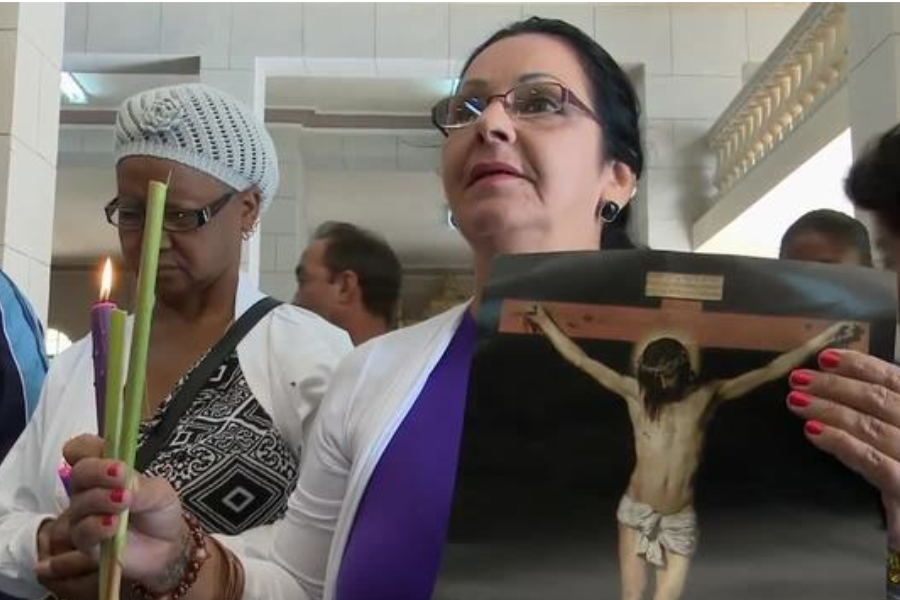Introduction
St. Lazarus Abba Kwi holds profound cultural, spiritual, and historical importance in Cuba and among Cuban communities globally. This article delves into the history, theological relevance, cultural significance, and customs associated with St. Lazarus Abba Kwi in Cuba. We will also explore the broader implications of his veneration, offering readers an in-depth understanding.
Who is St. Lazarus?
St. Lazarus is a notable figure in Cuban religious practices, represented in two primary contexts:
Lazarus of Bethany: Known from the Gospel of John, he was resurrected by Jesus after being dead for four days. This narrative underscores themes of faith, hope, and Jesus’s miraculous powers.
The Poor Beggar Lazarus: In the Gospel of Luke, Lazarus is a poor man who suffers in life but is rewarded in heaven, while a rich man who ignored him faces eternal suffering.
In Cuban traditions, St. Lazarus Abba Kwi uniquely blends elements from both biblical accounts and incorporates aspects of Yoruba spirituality from African traditions.
St. Lazarus in Cuban Tradition
In Cuba, St. Lazarus is revered not only as a Christian saint but also as a syncretic figure in Santería, an Afro-Cuban religious practice that merges Catholicism with Yoruba beliefs. In this syncretic context:
St. Lazarus is often identified with Babalu Aye, an orisha (spirit) in Yoruba religion linked to illness, healing, and the impoverished.
He is depicted as a frail, sick man dressed in rags, leaning on crutches and accompanied by dogs, symbolizing suffering, healing, and compassion. This portrayal highlights parallels between the Christian St. Lazarus and the Yoruba deity Babalu Aye.
Understanding Abba Kwi
The term “Abba Kwi” is less widely known but holds significance in religious devotion within specific spiritual circles in Cuba. While its exact interpretation can vary, it generally signifies a revered title within the syncretic practices honoring St. Lazarus.
The Significance of St. Lazarus Abba Kwi in Cuban Culture
A Symbol of Faith and Resilience
For many Cubans, St. Lazarus represents more than just a religious figure; he embodies the enduring spirit of the Cuban people. His image as someone enduring hardship yet offering healing and compassion resonates with the resilience of communities facing historical and ongoing struggles. St. Lazarus is particularly venerated by those who feel marginalized, making him a potent symbol of hope.
The Annual Pilgrimage to El Rincón
A central event in Cuban religious life is the annual pilgrimage to El Rincón, a village near Havana, on December 17th. Thousands of devotees journey to pay homage to St. Lazarus, engaging in various acts of devotion such as:
Crawling on hands and knees: Pilgrims may crawl for miles to fulfill promises or seek favors.
Carrying heavy crosses: Symbolic acts of penitence.
Lighting candles and offering flowers: At the shrine, these acts signify devotion and reverence.
This pilgrimage represents a unique fusion of Christian and Afro-Cuban rituals, reflecting Cuba’s distinct religious identity.
Devotional Practices
Followers of St. Lazarus Abba Kwi often perform daily or weekly rituals at home altars. Common offerings include:
Candles: Lit for blessings or healing.
Flowers and Herbs: Used as symbols of reverence.
Food Offerings: Such as roasted pork or fruits, reflecting Cuban culinary traditions.
Small Dog Statues: Representing the dogs said to have licked Lazarus’s wounds, symbolizing compassion and loyalty.
These practices highlight St. Lazarus Abba Kwi as an accessible figure who responds to the everyday needs of people.
St. Lazarus and Santería: A Deep Connection
The Role of Babalu Aye
In Santería, St. Lazarus is syncretized with Babalu Aye, a significant orisha associated with sickness, disease, and healing. Santería practitioners offer specific rituals to Babalu Aye, seeking relief from illness or protection. The fusion of St. Lazarus and Babalu Aye illustrates how Afro-Cuban religious practices preserve African roots while adapting Catholic symbolism.
Rituals and Offerings
Practitioners of Santería may engage in:
Sacrifices of Small Animals: Traditional offerings to Babalu Aye.
Herbal Baths: Used for spiritual cleansing, invoking the healing powers of Babalu Aye/St. Lazarus.
Dance Ceremonies: Energetic drumming and dancing that reflect African influences in Santería.
These rituals exemplify the evolving nature of religious identity in Cuba, where diverse spiritual needs are accommodated through practice.
The Healing Aspect of St. Lazarus Abba Kwi
Invoking Healing Powers
Devotees seek out St. Lazarus Abba Kwi for healing from physical ailments and emotional suffering. The belief in his power to cure is widespread, with many carrying medallions or wearing images of St. Lazarus as protective charms.
Testimonies and Miracles
Numerous Cubans have shared stories of miraculous healings attributed to St. Lazarus, often passed down through generations. These accounts reinforce the belief that St. Lazarus is always ready to listen and intervene in times of need.
The Cultural Fusion: Christianity and Afro-Cuban Religion
Cuba’s rich cultural tapestry is evident in its religious practices, particularly in the veneration of St. Lazarus Abba Kwi. This synthesis demonstrates:
Blending of Christianity and African Spirituality: Creating a unique religious identity in Cuba.
Coexistence of Syncretic Practices: Catholicism and Santería rituals often overlap, with practitioners engaging in both without conflict.
Evolving Cultural Traditions: New generations reinterpret religious practices, merging faiths and beliefs.
This fusion results in a vibrant spiritual landscape in Cuba, where diverse traditions harmoniously coexist.
How to Honor St. Lazarus Abba Kwi
To honor St. Lazarus Abba Kwi, consider these practices:
Create an Altar: Dedicate a space in your home with a statue or image of St. Lazarus, candles, flowers, and offerings.
Light a Candle: On Wednesdays, traditionally associated with St. Lazarus, light candles for protection and blessings.
Offer Prayers: Recite prayers for healing, guidance, or protection, especially during challenging times.
Attend a Pilgrimage: If in Cuba, participating in the annual pilgrimage to El Rincón is a meaningful way to connect with the saint’s legacy.
Modern-Day Relevance
St. Lazarus Abba Kwi remains a powerful figure in Cuba and among Cuban communities abroad. As the Cuban diaspora grows, the veneration of St. Lazarus introduces new cultures to this unique syncretic tradition.
His Symbolism in Modern Contexts
In an era marked by economic and social challenges, St. Lazarus represents:
Perseverance Through Suffering: His own struggles resonate with those facing hardships.
Community and Compassion: Devotion to St. Lazarus fosters solidarity among believers.
Healing and Recovery: Symbolizing hope for overcoming challenges and emerging stronger.
St. Lazarus Abba Kwi’s enduring significance underscores his role as a symbol of hope, resilience, and healing across diverse cultural contexts.
Conclusion
St. Lazarus Abba Kwi occupies a central place in Cuban religious and cultural life, symbolizing resilience, healing, and hope. His unique syncretic identity, blending elements of Christian and Yoruba traditions, reflects the rich spiritual tapestry of Cuba. Whether through the annual pilgrimage to El Rincón or daily devotional practices, St. Lazarus continues to inspire and uplift those who seek his blessings. As Cuban communities grow and spread globally, the veneration of St. Lazarus Abba Kwi introduces new generations and cultures to this profound tradition, ensuring its enduring relevance.
FAQs
1. Who is St. Lazarus Abba Kwi in Cuban tradition?
St. Lazarus Abba Kwi is a syncretic figure in Cuban religious practices, combining elements from Christian and Yoruba traditions. He is venerated as both a Christian saint and a representation of Babalu Aye, an orisha associated with illness and healing in Yoruba religion.
2. What is the significance of the pilgrimage to El Rincón?
The annual pilgrimage to El Rincón, held on December 17th, is a major event in Cuban religious life. Thousands of devotees travel to the village to honor St. Lazarus, participating in acts of devotion such as crawling on hands and knees, carrying heavy crosses, and offering candles and flowers.
3. How is St. Lazarus Abba Kwi depicted in Cuban culture?
St. Lazarus Abba Kwi is often depicted as a frail, sick man dressed in rags, leaning on crutches, and accompanied by dogs. This imagery symbolizes suffering, healing, and compassion, drawing parallels between the Christian St. Lazarus and the Yoruba deity Babalu Aye.
4. How do Cubans honor St. Lazarus Abba Kwi in their homes?
Many Cubans honor St. Lazarus Abba Kwi by creating home altars with his statue or image, lighting candles, offering flowers and food, and reciting prayers. These practices reflect their devotion and seek the saint’s protection and blessings.
5. What role does St. Lazarus Abba Kwi play in Santería?
In Santería, St. Lazarus is syncretized with Babalu Aye, an orisha linked to illness and healing. Santería practitioners perform rituals, including animal sacrifices, herbal baths, and dance ceremonies, to invoke the healing powers of Babalu Aye/St. Lazarus.
6. Why is St. Lazarus Abba Kwi important to Cuban culture?
St. Lazarus Abba Kwi embodies the spirit of resilience and hope in Cuban culture. He is especially venerated by marginalized communities, serving as a symbol of faith, healing, and compassion in the face of adversity.
Get the latest scoop and updates on forbesindo










